Why is the willow crying?

Asking the question why the willow is crying, a person does not even notice in such a perception of the phenomena of nature the means of expressiveness inherent in fiction. The statement that a plant can cry is personification (transfer of certain qualities from living to non-living). It is also called animation or personification.

What time does the willow cry?
In scientific treatises and explanations, there is no place for means of expression, even if it is a kind of metaphor. Facts and research make it possible to rationally explain moisture on willow branches, even when it is called weeping.
Willow is a genus of woody plants of the willow family. A characteristic difference between most of the willow species is the tendency to be placed in places with excessive moisture levels. Some can grow on hillsides and sandy soils, swamps and forests, but places where water is in close proximity to a tree is a distinctive feature for most species growing in Russia.
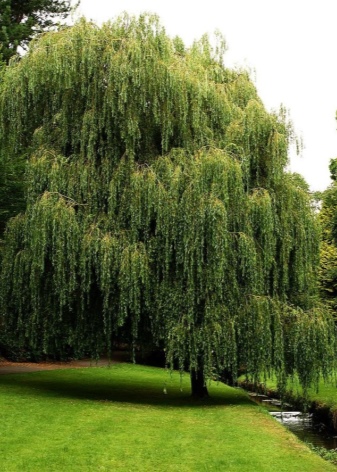

Willow cries more often in the heat before rain. In addition, this usually happens before it begins to bloom.
Interesting legend
The most common in temperate climates are white and yellow weeping willows. In total, there are more than 500 species around the world, but most of them are concentrated in the Northern Hemisphere. The harsh climate mentality forced people to settle near water bodies, and the weeping willow is one of the few plants that can grow right on the river bank. The branches were used for various purposes - mystical, ritual, medicinal, economic, for livestock feed. People could often observe willows while fishing. It is no wonder that they noticed the ability of willow leaves to cry and decided that the secreted liquid was nothing more than a tear released on a sad occasion.

This explains the origin of the ancient poetic legend. If you compare its plot and construction with other folk legends, it will seem banal. But its plot perfectly conveys the associations that arise in a romantic-minded person when looking at an unusual tree. The beautiful legend tells about curious facts.
The hunter guy and the beautiful girl fell in love with each other and were getting ready for the wedding. But she liked the leader of the robbers, who decided to prevent the marriage by killing her lover.
The groom, already seriously wounded, managed to warn her about the insidious plans and urged her to take refuge in a safe place. Such for her was the river bank and the willow, under which they spent their time. Then a miracle happened for salvation - the girl turned into a young willow.
However, even becoming a tree, she continued to mourn for her beloved and still could not stop the flow of tears, from which a reservoir subsequently formed.
Possessing a poetic imagination, in each willow one can see a female figurine, her head bowed to the surface of the water and crying for her lost lover.

People with poetic thinking saw in this phenomenon the personification of human qualities - they decided that the tree was crying. Therefore, a tree growing near the water is called a weeping willow. The water that drips from the branches reminds the authors of folk works of human tears.
The distinctive features of the tree became the reason for the attention of folk artists. - thin graceful branches that let in sunlight, unusual silvery-gray bark, reddish-brown shoots - the first sign that spring is beginning, glowing buds - a source of nutrition for the first awakened insects, trunk bends as graceful as branches with leaves interesting shape.
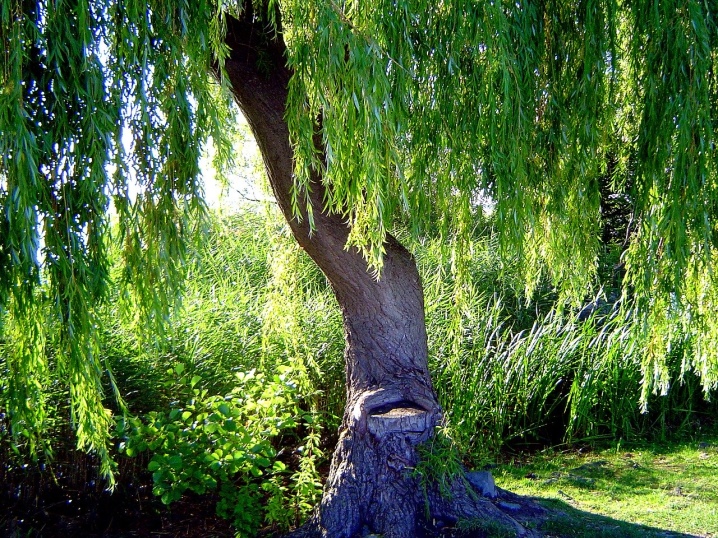
In folk omens it is said about some of the consequences of planting a willow near the house:
- the owner is waiting for a constant longing for the bygone past, a neighborhood with evil spirits and the souls of the dead, who supposedly love to swing on its bent branches;
- it is dangerous to plant it when there is a small child in the house, and the old and hollow one is considered a haven for evil spirits.
It is possible to understand what of these statements corresponds to the truth only on our own experience, but there are few who wish to tempt fate in this way. This is probably why willow can be most often found on the shores of natural reservoirs.
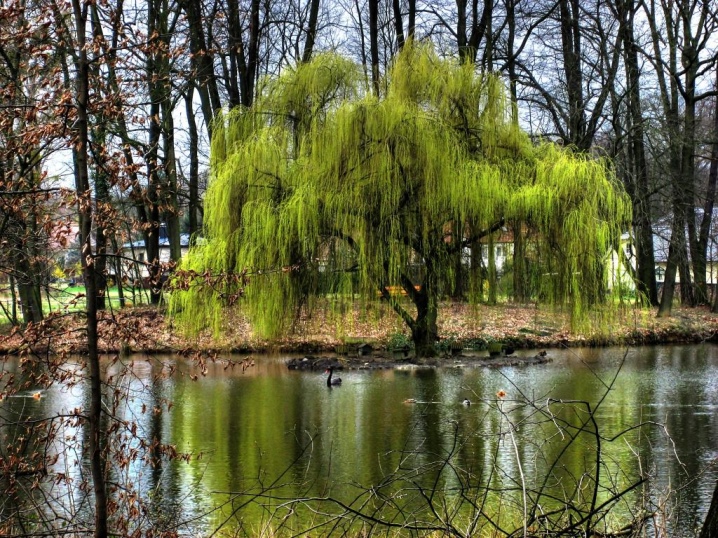
Scientific explanation
However, scientists have neither the right nor the time for artistic metaphors. The task of scientific research is to find a rational explanation for the most incredible and fantastic phenomena, to debunk common misconceptions and myths. The prosaic and rational explanations for the moisture release of willow trees are not reduced to legends or to visual illusions, but to facts obtained through scientific research.
Willow is a fairly old tree that was found on Earth in the Cretaceous period. Many scientists were engaged in its description, starting with Pliny the Elder and ending with A. Skvortsov, who wrote a detailed study of "Willows of the USSR".

Even skeptical scientists cannot convincingly explain why young trees cry more. They say that guttation is inherent in plants that do not have a balance between the ability of leaves to evaporate and the intensive growth of root systems. But in nature, this ability is more often observed in grasses and cereals, and not in trees.
Gutting is a natural process, the principle of which can be compared to opening a water tap: the waste liquid is drained away with “tears” and this is how the problem of excess liquid and, at the same time, water exchange is solved.
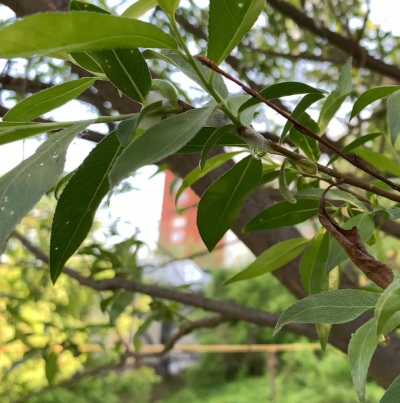
Guttation is a natural phenomenon that is often confused with dew. But dew is the result of condensation that appears on leaves and grasses from moist air. A gutting is the result of excessive absorption of water by the roots.
A characteristic feature of the weeping willow is its habitual habitat, at the very edge of river banks. The tree forms dense thickets, where the sun hardly penetrates, usually contributing to the evaporation of excess moisture. The young vegetative mass of trees is forced to look for an independent way to solve the problem with moisture absorbed in excess by the roots. Therefore, water gradually emerges along the edges. It collects into droplets and, having reached a critical mass, under the influence of gravity, drips into its original source - a river or stream.

There is evidence that guttation is not dew from humid air: when examined, salts and active compounds contained in the tissues of the tree were found in it. This means that the water has passed through the cells, along the way, collecting the molecules that are in the highest concentration.
Pennits are another factor of natural origin. These are small insects, willow pests, which suck the sap from the leaves of the tree. By converting the sucked liquid into foam. This cocoon protects the larvae of the pest, creates a comfortable habitat for them. Large amounts of foam and wind will cause it to break off and fall onto damp ground or water.
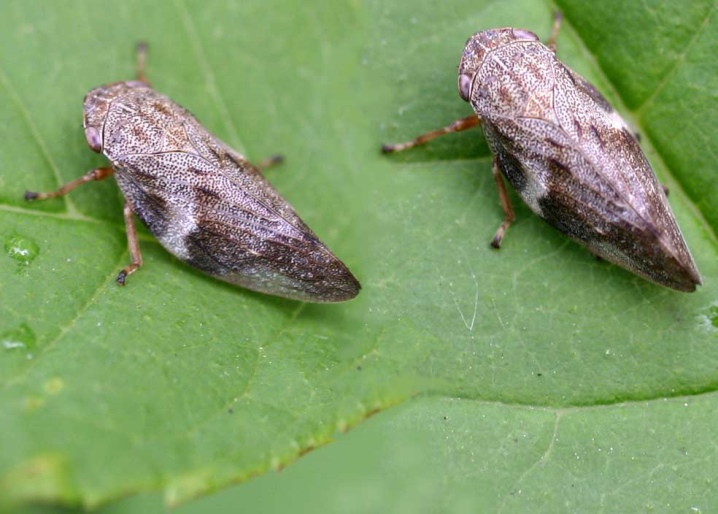
The explanations obtained do not seem to be convincing enough for some scientists. They are still convinced that this is a natural mystery that needs to be explained, as is the presence in willow bark of natural antibiotics, the substance from which aspirin is made. Perhaps this group of scholars is influenced by the reverence with which the willow is treated in pagan beliefs, Christianity, in the Orthodox religion and folklore. For a rational explanation, two generally accepted versions are quite enough.
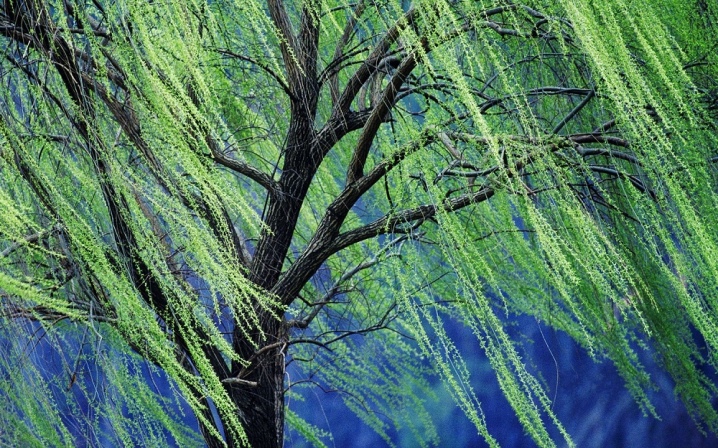



































































The comment was sent successfully.